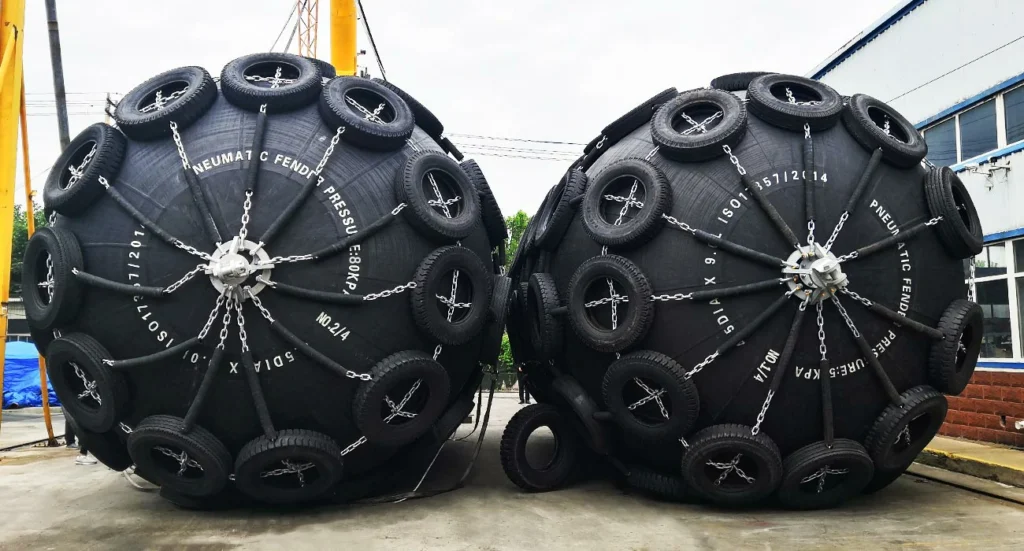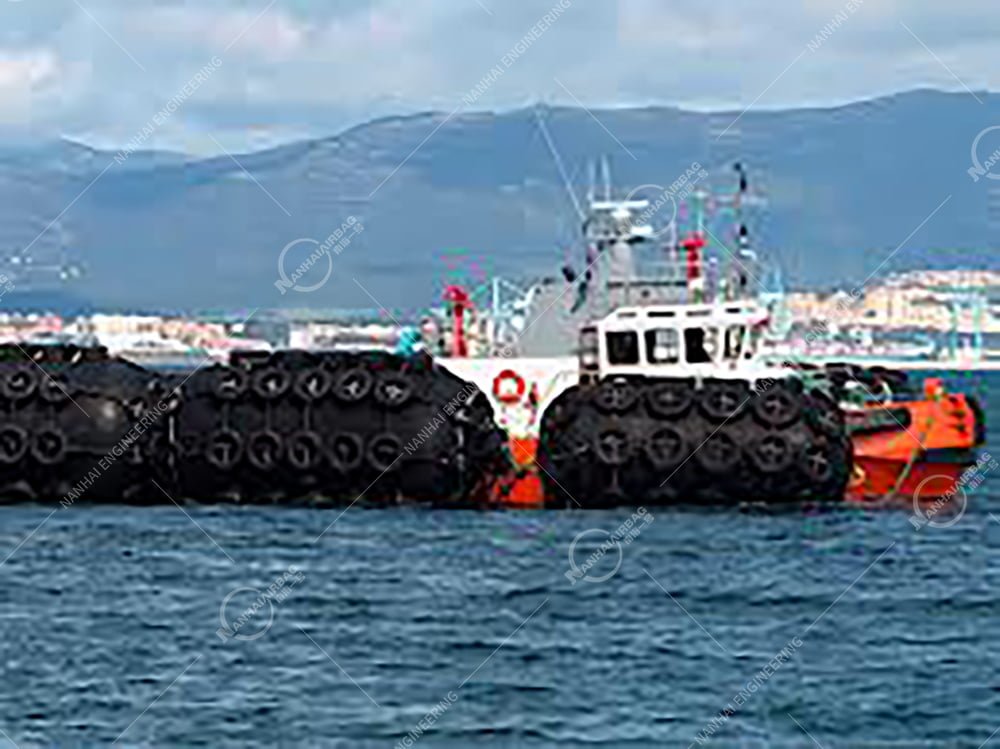Salvage Airbags: The Underwater Lifesavers Rewriting Maritime Rescue Rules
12/08/2025EVA Foam Fenders: The Lightweight Heroes of Gentle Docking & Marine Protection
19/08/2025

Picture this: A 200-foot cargo ship glides toward a busy dock at dusk. The crew edges it in, nerves frayed—too close, and the hull scrapes the pier; too far, and it drifts into rough water. One wrong move could mean thousands in repairs, delayed cargo, or even a fuel spill. Enter STS fenders (Ship-to-Shore fenders): the unassuming, rubbery workhorses that turn chaotic docking maneuvers into smooth, stress-free routines. Let’s unpack why these marine essentials are non-negotiable for ports, shipyards, and boat owners alike.
What Are STS Fenders? (The Quick Answer)
STS fenders (Ship-to-Shore fenders) are specialized marine fenders engineered to protect ships, docks, and cargo during ship-to-shore operations like docking, launching, or repositioning. Unlike generic rubber fenders or rigid steel bumpers, STS fenders are designed for the unique demands of “ship-to-shore” transitions—they absorb impact, reduce friction, and prevent damage to vessels, docks, and cargo. Made from durable rubber (like EPDM or neoprene) or synthetic materials, they’re built to withstand saltwater, UV rays, and the brute force of heavy ships.
Why This Matters: When a Bad Docking Costs Millions (and Ruins Reputations)
Imagine a port in Houston during peak oil tanker season. A 100,000-ton tanker glides in, relying on a rusted metal fender to cushion the blow. The fender buckles under pressure—the tanker’s hull scrapes the concrete pier, tearing a 4-foot gash. Repairs? 250k.Downtime?4daysoflostcargoshipments.Environmentalfines?100k for spilled fuel. All because the port used outdated fenders.
This isn’t hypothetical. In 2023, a busy Mediterranean port reported 12 major ship-to-shore collisions in 6 months, costing operators over $10M in repairs and delays. Meanwhile, ports that upgraded to STS fenders saw a 70% drop in collision-related incidents. Why? Because STS fenders are built for the specificchallenges of ship-to-shore operations:
- High Impact Forces: Ships move fast, and even a 1-knot mistake can generate tons of force. STS fenders absorb 50–70% more energy than standard fenders.
- Hull Protection: Modern ships use lightweight materials (fiberglass, aluminum) that scratch easily. STS fenders’ soft, flexible design prevents dents and tears.
- Dock Longevity: Concrete and steel docks take a beating from repeated impacts. STS fenders distribute weight evenly, reducing cracks and structural damage.
How Do STS Fenders Work? The Science of “Smooth Transitions”
These aren’t your average dock bumpers—they’re engineering marvels tailored for ship-to-shore chaos:
1. Multi-Layered Rubber Design
STS fenders typically have a tough outer rubber layer (EPDM or neoprene) wrapped around a dense foam or synthetic core. The rubber conforms to the ship’s hull, spreading impact forces, while the core absorbs kinetic energy like a sponge. This dual system reduces peak force by up to 70% compared to rigid fenders.
2. Strategic Placement = Precision Protection
STS fenders are strategically positioned along dock edges, pilings, or launch ramps. Their curved or angled design guides ships into place, preventing “drifting” and ensuring even contact with the dock. Some models even have adjustable brackets to fit irregular dock layouts.
3. Durability That Stands the Test of Time
Made with UV-resistant, saltwater-proof materials, STS fenders last 10–15 years—even in harsh coastal environments. Cheaper alternatives (like basic rubber pads) tear or crack after 2–3 years, but premium STS fenders keep working, saving money over time.
Why STS Fenders Beat the Competition
Generic marine fenders (rubber pads, steel bumpers) have their uses, but STS fenders are built for ship-to-shore operations:
1. vs. Regular Rubber Fenders
Regular fenders are thin and rigid—they concentrate impact on small areas, leading to dents or tears. STS fenders’ multi-layered design spreads force across a larger surface, protecting both the ship and the dock.
2. vs. Steel Fenders
Steel fenders are durable but inflexible—they transfer impact back to the ship, causing hull stress. STS fenders absorb and redirect energy, reducing strain on both the vessel and the dock.
3. vs. Foam Fenders
Foam fenders are great for soft landings, but they lack the structure to handle heavy ships. STS fenders combine foam’s shock absorption with rubber’s durability, making them ideal for large vessels.
People Also Ask: Your Top Questions About STS Fenders
Q: How do STS fenders differ from marine airbags?
A: Marine airbags (inflatable rubber cylinders) are for liftingships during launches or repositioning. STS fenders, on the other hand, are for protectingvessels and docks during docking—they use rubber’s flexibility to absorb impact, not air pressure.
Q: What sizes are available?
A: They range from small (1m–1.5m tall) for small boats to massive (2m–3m) for cargo ships and tankers. Custom sizes are often available to fit unique dock layouts or vessel shapes.
Q: Are they easy to install?
A: Yes—most are bolt-on or use quick-connect brackets. A team of 2–3 workers can set up a full dock system in a day. Many manufacturers also offer pre-assembled kits for fast deployment.
Q: Do they need maintenance?
A: Minimal. Inspect for cracks or debris monthly, and clean with mild soap and water. Replace the outer rubber layer every 8–10 years (the core lasts even longer).
Q: Are they worth the upfront cost?
A: Definitely. Ports and shipyards recoup the investment in 2–3 years through fewer repairs, lower insurance premiums, and reduced downtime. One port in Florida saved $1.5M annually after switching to STS fenders.
Final Thoughts: Don’t Let Docking Disasters Sink Your Business
In an industry where every collision costs time, money, and reputation, STS fenders aren’t just an upgrade—they’re a necessity. They protect your assets, keep operations running smoothly, and future-proof your port against bigger ships and stricter regulations.
Ready to upgrade? Start by measuring your docking area and vessel size, then reach out to trusted marine equipment suppliers (look for those specializing in marine fenders). Your hull, your dock, and your bottom line will thank you for years to come.
